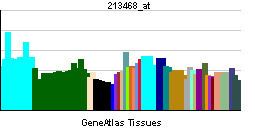Species Human Entrez 2068 | Human Mouse Ensembl ENSG00000104884 | |
 | ||
Aliases ERCC2, excision repair cross-complementation group 2, COFS2, EM9, TFIIH, TTD, XPD, TTD1, ERCC excision repair 2, TFIIH core complex helicase subunit External IDs OMIM: 126340 MGI: 95413 HomoloGene: 344 GeneCards: ERCC2 | ||
ERCC2, or XPD is a protein involved in transcription-coupled nucleotide excision repair.
Contents
The XPD (ERCC2) gene encodes for a 2.3-kb mRNA containing 22 exons and 21 introns. The XPD protein is a 760 amino acids polypeptide with a size of 87kDa. Defects in this gene can result in three different disorders: the cancer-prone syndrome xeroderma pigmentosum complementation group D, photosensitive trichothiodystrophy, and Cockayne syndrome.
Just like XPB, XPD is also a part of human transcriptional initiation factor TFIIH and has ATP-dependent helicase activity. It belongs to the RAD3/XPD subfamily of helicases.
XPD is essential for the viability of cells. Deletion of XPD in mice is embryonic lethal.
Consequences of mutations in XRCC2
The ERCC2/XPD protein participates in nucleotide excision repair (NER), and is employed in unwinding the DNA double helix after damage is initially recognized. NER is a multi-step pathway that removes a wide range of different damages that distort normal base pairing. Such damages include bulky chemical adducts, UV-induced pyrimidine dimers, and several forms of oxidative damage. Mutations in the ERCC2/XPD gene can lead to various syndromes, either xeroderma pigmentosum (XP), trichothiodystrophy (TTD) or a combination of XP and TTD (XPTTD), or a combination of XP and Cockayne syndrome (XPCS). TTD and CS both display features of premature aging. These features may include sensorineural deafness, retinal degeneration, white matter hypomethylation, central nervous system calcification, reduced stature, and cachexia (loss of subcutaneous fat tissue). XPCS and TTD fibroblasts from ERCC2/XPD mutant human and mouse show evidence of defective repair of oxidative DNA damages that may underlie the segmental progeroid (premature aging) symptoms (see DNA damage theory of aging).
Interactions
ERCC2 has been shown to interact with:
Interactive pathway map
Click on genes, proteins and metabolites below to link to respective articles.
